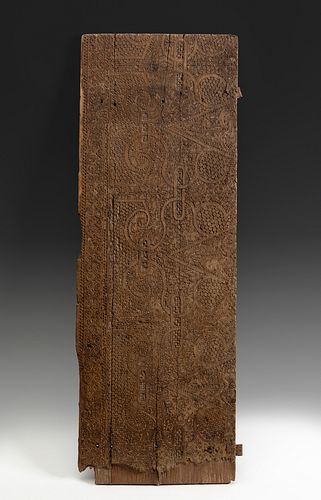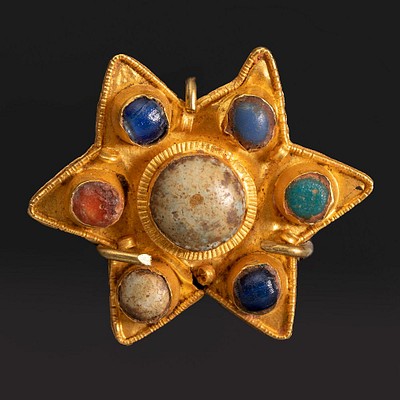Door of a Mudejar piece of furniture, XIV-XV centuries. Carved wood.
Lot 31
About Seller
Setdart Auction House
Carrer Aragó 346
Barcelona
Spain
Setdart Subastas was born in 2004 and is currently the first online art auction in Spain with solidity, prestige and reliability guaranteed by our more than 60,000 users. Setdart has a young, dynamic and enterprising team ready to successfully manage the purchase and sale of art works through custom...Read more
Estimate:
EUR€8,000 - EUR€8,500
$8,602.15 - $9,139.78
Absentee vs Live bid
Two ways to bid:
- Leave a max absentee bid and the platform will bid on your behalf up to your maximum bid during the live auction.
- Bid live during the auction and your bids will be submitted real-time to the auctioneer.
Bid Increments
| Price | Bid Increment |
|---|---|
| EUR€0 | EUR€10 |
| EUR€200 | EUR€25 |
| EUR€500 | EUR€50 |
| EUR€1,000 | EUR€100 |
| EUR€3,000 | EUR€200 |
| EUR€5,000 | EUR€500 |
| EUR€10,000 | EUR€1,000 |
| EUR€20,000 | EUR€2,000 |
| EUR€50,000 | EUR€5,000 |
About Auction
By Setdart Auction House
Dec 21, 2021
Set Reminder
2021-12-21 07:30:00
2021-12-21 07:30:00
America/New_York
Bidsquare
Bidsquare : Córdoba: 2,000 Years of Art
https://www.bidsquare.com/auctions/setdart-auction-house/c-rdoba-2-000-years-of-art-8049
Setdart Auction House sofia@setdart.com
Setdart Auction House sofia@setdart.com
- Lot Description
Door of a Mudejar piece of furniture, XIV-XV centuries. Carved wood. Measurements: 103 x 37 cm. Mudejar furniture door entirely made of carved and polychrome wood, decorated with intricate Grecian and vegetal motifs in curved designs, tending to horror vacui and great compositional rhythm. Judging by its considerable size, we would find ourselves in front of the door that, together with another of the same characteristics, would form the front of a closet or cabinet. It does not preserve remains of polychromy, but the hinges are preserved. The Muslim art is, fundamentally, an aniconic art, where the representation of living beings is seen with distrust, being prohibited, in general, the painted or sculpted representation of the human being, but also of animals and even flowers or plants. Because of this, he developed a very rich decorative apparatus based on geometric elements and Arabic script. Private palaces and religious buildings are filled with plastered plinths and ceilings and carved wooden doors with elaborate motifs based on interlacing and borders. Because of their decorative richness and absence of obvious religious symbolism, these elements were easily integrated into Christian buildings. In some areas, such as Aragon, Muslim craftsmen were also highly appreciated and their work, which was highly valued at the time, can be seen in such important buildings as the cathedral of Teruel, the monastery of the Holy Sepulchre in Zaragoza, the cathedral of Tarazona, among others.
- Shipping Info
-
In-house shipping available. Please inquire at admin@setdart.com.
-
- Buyer's Premium



 EUR
EUR CAD
CAD AUD
AUD GBP
GBP MXN
MXN HKD
HKD CNY
CNY MYR
MYR SEK
SEK SGD
SGD CHF
CHF THB
THB















